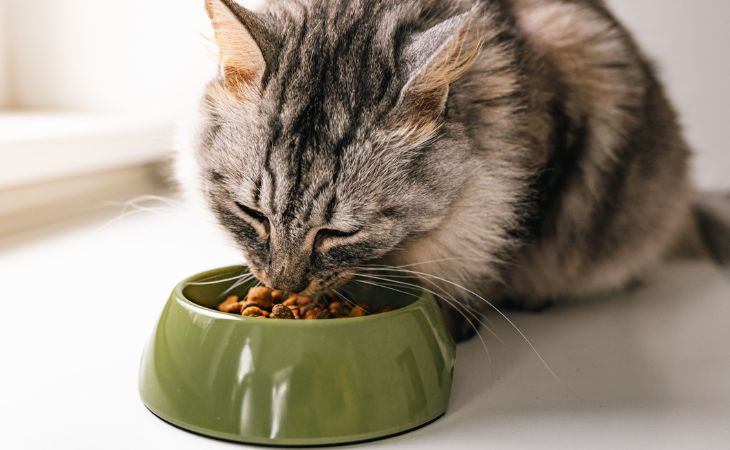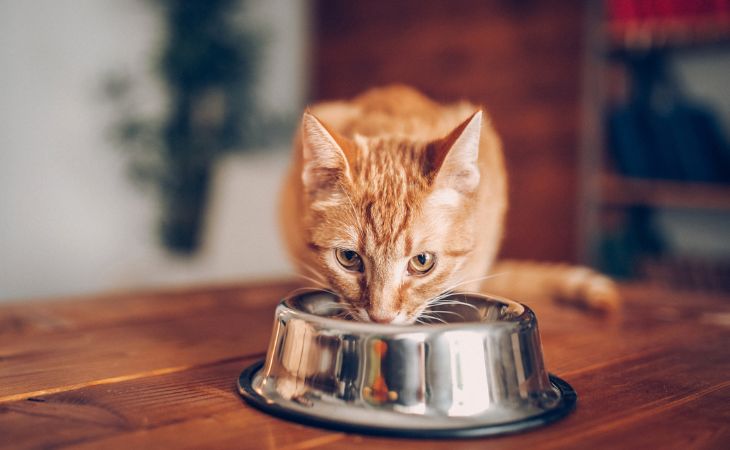Our cats ask us for food every day. And as cat owners, it is our job to provide nutritional food. One of the first things cats search for is a safe and comfortable place to eat. Usually, a bowl placed in an area without too much foot traffic is perfect. However, when it comes to their food and what it contains, cats can be more picky.
As cat owners, it’s important to truly understand the nutritional needs of our cats and feed them well consequently.
What is the ideal diet for your cat?
We know that you want to provide your pet with the best food possible. But are you having a hard time deciding when faced with the products that are available? Do the people around you feed their pets differently? It’s important to begin by focusing on your cat’s nutritional needs.
A cat’s basic diet
Domestic cats have still kept aspects of their life close to how it is in the wild. When cats go outside, they sometimes return home with a small mouse or bird. This can give you an idea of what the “standard” meal that your cat would like to receive during their meals is. Cats are strict carnivores. They love small prey just as much for the protein as the pleasure that hunting them provides.
How do I provide my cat with the ideal nutritional diet?
It’s important to feed your cat food that is good for their body, and not just the first kibble packet you see when you go grocery shopping. To stay healthy, cats need animal proteins, vitamins, and minerals. In addition, calcium and phosphorus are two minerals that are necessary for their development. When it comes to carbohydrates, this makes up only 2% of their nutritional requirements. It’s important to point out that good hydration is essential, as is a good supply of fiber for the digestive system.
When you search for foods, make sure to read the ingredient list well. This will help you avoid foods that are too rich in carbohydrates and bad fats. In addition, you should give your cat a reasonable amount of paté three times a day to avoid letting the paté sit. Cats prefer when their food is at room temperature. Leave kibble out and keep fresh water available close by. Just like in the wild, cats appreciate being able to eat small portions whenever they like. They eat around 10 to 20 times throughout the day.
Nutritional mistakes you shouldn’t make with your cat
Does your cat hang out around the table during meal time? Are you tempted to let them taste what you are eating? This is not the best thing to do. This is because the meals that we prepare are not suitable for them. For example, the salt and sugar content doesn’t suit them. In addition, if you do this, you run the risk of them trying to stealing food when they aren’t allowed to! For the same reasons, don’t give them leftovers from your meals.
Above all, do not let your cat eat chocolate, which is poisonous for their body.
This article might also interest you: Top 26 dangerous foods for cats
How to feed your cat depending on their age
For your cat to stay healthy for many years, it’s important to adapt the food to their age and their way of life.
The nutritional needs of kittens
The diet of your kitten needs your undivided attention. Your pet’s health and growth for years to come depends on it. As soon as your pet has been weaned, provide them with food that is rich in vitamins and minerals. From 7 weeks until adulthood, you need to make sure that your cat’s food has a high protein content because their growth requires a lot of energy. Your little ball of fur eats around 130 kcal per day!
Kittens absorb taurine and arginine from their daily meals, two essential amino acids for the heart, eyes and metabolism. Don’t omit lipids to provide a source of fatty acids found in vegetable oils and meat. Carbohydrates are not necessary for kittens. In fact, carbohydrates in starch can even upset their digestive system. To keep you kitten healthy, you should ensure that your cat has a good balance between calcium and phosphorus intake for bone formation. A good dose of vitamins A and D allow for good development.
What foods should I prioritize for a sterilized cat?
Sterilized cats tend to gain weight easily. Additionally, the nutritional needs of cats are changed after being sterilized. This is because the caloric intake should be less. Therefore, choose kibble that is rich in fibers and low in grains to limit carbohydrates and promote intestinal transit. Make sure that this is a good amount of protein and mineral content. In addition, be careful if your cat spends their days indoors because they exercise less. If your cat has been sterilized, you need to also acidify your their urine to prevent urinary problems such as cystitis or urethral obstruction.
The nutritional needs of senior cats
Age can change the nutritional needs of cats. When cats are around 8 to 10 years old, they tend to show more weaknesses when it comes to their urinary and bone health. Therefore, the dry and wet food that you give your senior cat should be low in calcium and phosphorous. This will help avoid calcification, which leads to osteoarthritis and kidney stones. With that being said, don’t change your cat’s food too quickly. At first, mix the two types of kibble together to avoid any digestive disorder.
If you start to notice that your cat is having a hard time eating or is eating less, provide them with nutritional supplements. Tooth tartar could also be preventing them from eating correctly.

What food should I give when faced with a cat’s illnesses?
When your cat suffers from an illness, it’s important to be more careful about the type of food that you are providing.
How to prevent obesity
Similar to humans, it is becoming more and more common for pets to gain weight because of a poorly balanced diet in relation to their physical activity. To begin with, weigh the food that you give your cat during the day. You might be surprised! If you have an indoor cat, it’s important to keep in mind that their risks of being overweight are heightened. Because of this, take time to play with them to ensure that they get enough exercise. You can also hide kibble in kibble distributing toys or in areas that are difficult to access. This will awaken your cat’s hunting side and will keep them stimulated. Another way to prevent obesity is by providing your cat with kibble that is “lighter”, but well-balanced in minerals and vitamins. That way your cat will not feel like they are being rationed and you will be reassured that your cat isn’t suffering from deficiencies.
This article might also interest you: Why is my cat always asking for food?
Feeding reflexes for cats with feline urinary tract infections
It isn’t rare for a cat to suffer from a urinary tract infection or kidney stone. However, which this happens, certain feeding reflexes should be adopted to limit the aggravation of the issue and the pain that comes from it. The most simple gesture that you can do is ensure that your cat is well-hydrated. Cats need to have easy access to fresh water, especially if they are fed with dry food. Additionally, changing your cat’s diet can also be beneficial. If you notice that your cat isn’t drinking enough, you can switch to wet food in the form of paté. You’ll also need to acidify your cat’s urine.
How to deal with allergies and food intolerances
It’s common for cats to suffer from food intolerances and allergies. They often take the form of gastrointestinal problems or even ear infections. Sometimes, cats can develop skin diseases or respiratory failure. In general, the allergy come from a protein absorbed by the cat. If you typically give your cat beef or fish, try to change the source of your cat’s proteins for some time. Furthermore, grains and dairy products present in cat food can also be potential allergens. The best way to guarantee your cat’s nutritional tolerance is through a qualitative diet.

